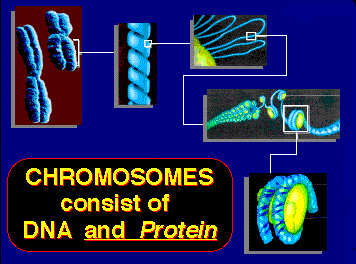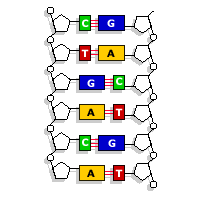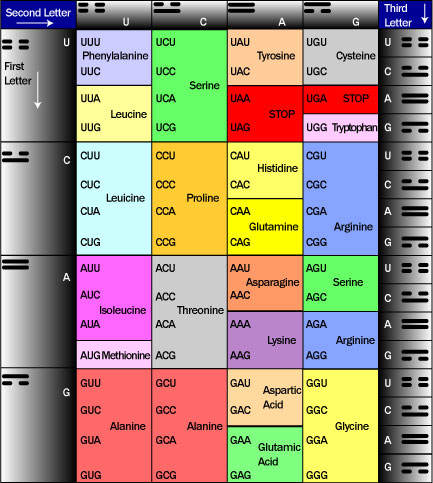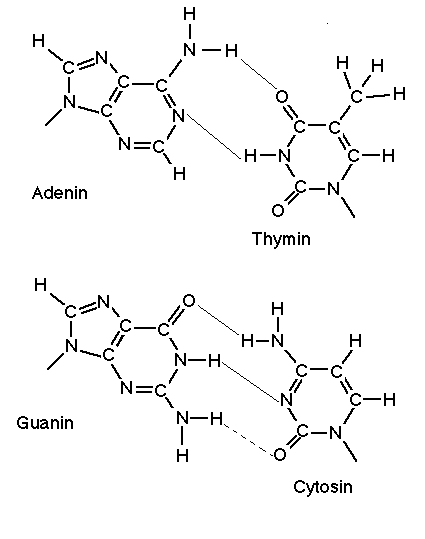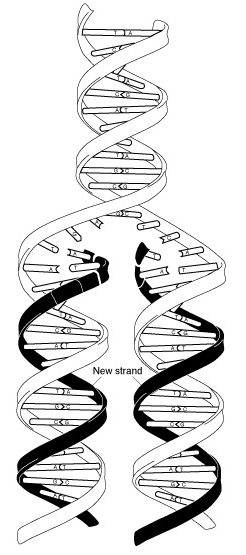 Knowing
the hidden world
Knowing
the hidden world
Genetics
![]() Genetics
and hard inheritance: the scientific
importance of our ancestry.
Genetics
and hard inheritance: the scientific
importance of our ancestry.
Three significant impacts | Conclusion | Terminology | start here
"The actual term genetics was coined in 1906, when William Bateson informed" botanists that "a new and well developed branch of Physiology had been created. To this study we give the name Genetics."1.
Genes were considered hard inheritance and the term taken from the word "pangene" is another wonderful, but not well-understood though widely used, example of reductionist thought in biology. The term gene as used in 1909 by Wilhelm Johannsen a Danish scientist wanted a new term free of "taint" and this became an effective concept because it developed into a useful means to reveal biological complexity until the description of DNA was confirmed in 1953. With both that confirmation and the further discovery of RNA, a far more complicated picture of inheritance emerged. Far more a contingent set of ideas are now involved in understanding a gene, let alone the related term of genome, and the growing branch of science called Epigenetics. All of the words thus stemming from Bateson's and Johannsen's original conceptualizations.
Then, with epigenetic findings evidence revealed that the distinctions between "hard" and soft inheritance, drawn by early research scientists was far too sharp to adequately describe what exists in nature. Thus was and is being revealed the means by which enormous diversity arises from so simple a chemical combination as found in DNA and RNA.
Three significant impacts | Conclusion | Terminology
What genetics reveals about how genes do perform viable functions.
I. There is no more important area of scientific research as it affects humans due to many recent breakthroughs:
1953, DNA's structure was discovered by five people
1989, The Human Genome Project
1999, cloning of a sheep embryo (that cloned sheep is now deceased)
2004, RNAi suppression of DNA genotypes
Chromosomes, like the one pictured above, are tightly wound strands of DNA held in position by proteins called histones that fold the helically shaped molecule into durable structures resembling circular staircases.
Second significant impact
on each of the chromosomes an arrangement of genes was revealed to be a sequence of paired nitrogen bases that code for specific amino acids, or turn on, or turn off the capacity of RNA to edit, translate, and assemble proteins.
- therapy for diseases with manufactured genes is commonplace
- food with GMOs, genetically modified organisms
- genetic engineering
In the above drawing the point is to show that three base pairs of DNA are interpreted by RNA to create an amino acid sequence that is unique in forming particular proteins. Proteins are what make living things function as they do.
The binary code: Table for the translation or a Rosetta Stone of DNA sequences.
Third significant impact
III. Inheritance is so dangerously misunderstood, because the way scientists describe the traits we inherit from our ancestors is not easy to understand. That is because two or even more distinguishable concepts are used to explain what was once called "hard inheritance." If subdivided further, the broader subject of inheritance is more like a cooperative production from distinct parts to form a functional outcome despite changing conditions.
genotype: is specifically implicated in both evolution and disease.
phenotype is so crucially implicated in Eugenics movements to allegedly discard people with defective genes.
triple helix is so important to understanding how the environment plays a buffering role in the adjustment of genetics to ecology
"The Unseen Genome: Beyond DNA," genetic vs. epigenetic considerations.
The structure of DNA is inheritable but the assembly for RNA to interpret is to some extent lost in part from one generation to the descendant generations.
Chromosomes are not genomes but parts of the genome.
RNA the masterful duplicator.
First significant impact
The chromosomes are like bundles of material with packages inside of which are found proteins and the nitrogen base pairs that make up deoxyribonucleic acid or DNA.


What is next?
- Human Genome Project is the ongoing, four decade old effort to identify, map and describe the location of all the genes in the human cell nuclei, although some genes are also found outside the nuclei of cells in the mitochondria.
So that with respect to genetics, two very significant revolutions are taking place. One in the means to know, and another in what we do with this knowledge. Thus the application of knowledge and the body of knowledge itself, are together changing in ways that will alter our identity, our social order, and our environment. *
- Human genome
- Genes are not what they appear to be:
- Lewontin, The Triple Helix
- Keller, The Century of the Gene
- Immunity and resistance to disease
- Margulis and the Origins of Eukaryotic cells
- The secrets of the X chromosome in humans
- Are genes better seen as a duet or a trio of players?
* definition drawn from Richard Feynman.
Genotype
DNA or deoxyribonucleic acid is often described in ways that are not accurate.
Genotype refers to the actual materiality of inheritance which is hidden by the expression or exhibition of heritable traits which is called the phenotype. The chemistry below is hidden from observers such that electron microscopes were needed to verify the existence of the structural components of DNA and RNA.
– inheritable molecule having four distinct nitrogen bases:
- A, is for Adenine
- T, is for Thymine
- C, is for Cytosine
- G, is for Guanine
Bases always pair:
A=T
C=G
In binary code, it is as if:
00 = 11
01 = 10
Where: A = 00, T= 11 and that C = 01 and G = 10 and where ones pair with zeros.
In RNA, ribonucleic acid, U, is for Uracil and it replaces C.
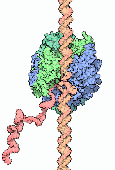 A drawing of RNA polymerase.
A drawing of RNA polymerase.
"Ribosomes are cellular machines that read RNA messages (themselves transcribed from DNA) and churn out proteins." So says Richard Dawkins as he makes the case for the complexity of microbial or bacterial life. "Ribosomes are vital to all cells, and are universally present They are themselves made largely of RNA – called rRNA and completely separate from the RNA message 'tapes' that the ribosomes read and translate into protein. rRNA is itself originally specified by DNA genes."
Dawkins (2005). p. 557.
RNA, ribonucleic acid, adds to the functionality of DNA as a means of inheriting the capacity to make proteins.
1) Genetics is of utmost importance to comprehend disease and life's capacity for renewal.
2) The discoveries of genetics, though revolutionary all sustained Darwin's evolutionary insight into the variability of life on Earth.
3) There are few more misunderstood forms of knowledge than inheritance and the role played by genes in sustaining life, reproduction, and variation.
"The phenotype is the external and visible manifestation of the hidden genotype." Dawkin's insists correctly that "Textbooks of biology are wrong when they describe DNA as a blueprint. Embryos do nothing remotely like following a blueprint. DNA is not a description. . . . embryos construct themselves by following a sequence of organic folding instructions."
Richard Dawkins, The Ancestor's Tale. (Boston: Houghton Mifflin, 2005), p. 186, 414-415.
1. Keller, The Century of the Gene. (Cambridge: Harvard University Press, 2000), p. 1.
E. F. Keller, The Century of the Gene.
Further discussions of genes, genomes, and genotypes are found in:
Mayr, One Long Arguement. (Cambridge: Harvard University Press, 1992).
Lewontin: The Triple Helix about genetics.
Darwin | Mayr | Ehrlich | Faulkner | Hardin | Hooke | Bronowski | Tattersall | Margulis | Miller | Wilson | Thomas


